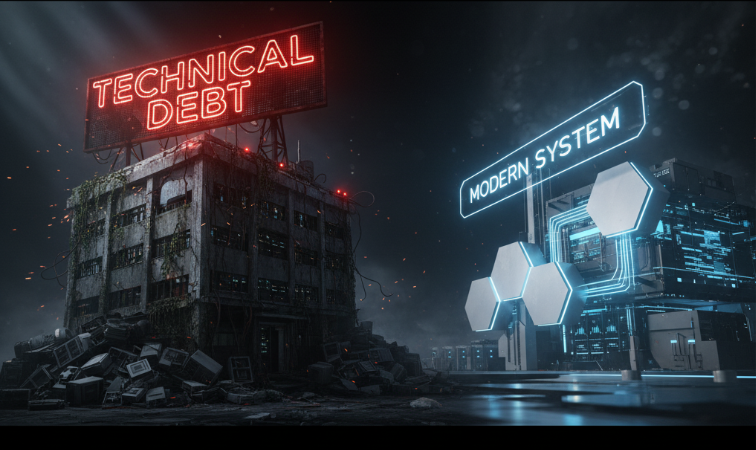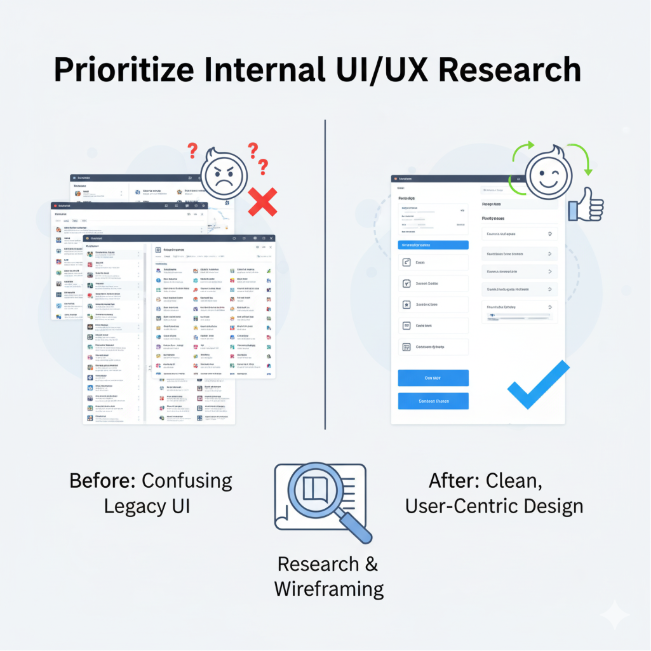
Your B2B tech stack is supposed to be your greatest asset, driving growth and saving you time. But if you’re like most companies, you might feel like your software is holding you back.
The problem is often simple: you’re using the wrong tech for your unique processes. This leads to technical drift where the foundation of your software just doesn’t match the unique way your business operates.
When using the wrong technology, you often waste time and money and in more ways than one.
You purchased a powerful, generic SaaS system (like a CRM or ERP) hoping for a quick fix. It’s great for 80% of common tasks. The other 20% consists of your unique competitive advantage which may include your proprietary pricing model, niche client validation, or complex fulfillment process.
Since the generic software can’t handle these critical, unique workflows, you hire contractors to force an integration. You use complex spreadsheets and custom scripts to move data, creating a fragile and difficult-to-maintain system.

The solution is to stop patching and start building a reliable foundation.
You have a critical internal system, perhaps an order management tool or a legacy client portal that has been running for many years. It works, but it’s built on old, outdated code. You or your IT team are nervous to touch it, so you postpone replacement and maintenance.
The Mistake: This aging software creates technical debt. It’s like ignoring a leaky roof; you save a little money now, but you face massive, sudden damage later.

The strategy is to make continuous, incremental investments instead of waiting for a single, catastrophic failure.
Imagine you have 4 different systems: Sales, fulfillment, billing, and your client portal. If each of those systems tracks the same customer but uses slightly different rules (e.g., one uses “Client ID” and another uses “Customer Account Number”), you have a data chaos problem.
The Mistake: You let your different tools define key information (like a “Customer” or “Product”) differently across multiple silos.
The solution is to create and enforce a “golden record” for all key business entities.
You successfully launched a new internal tool. It works perfectly… until you hit a sudden spike in traffic, add a new service, or start collecting massive amounts of data from a new source. Then, the system slows to a crawl or simply crashes.
The Mistake: You chose software architecture that works fine for the first 1,000 users but falls apart under the stress of rapid growth (non-scalable architecture).
Scaling is not just about adding servers; it’s about architectural design.
You invested heavily in internal software like a logistics dashboard or operations system that is technically functional, yet your employees avoid it. They still use spreadsheets or printouts because the software is confusing, requires too many clicks, or is frustrating to navigate.
The Mistake: You neglected Internal User Experience (UX). You assumed that because employees are forced to use the tool, design doesn’t matter.
Treat your internal users with the same respect as your paying customers.

You cannot afford to let these 5 common mistakes with the wrong tech cripple your growth. The path to true tech efficiency lies in replacing patchwork solutions with strategic, custom-built foundations. This shift turns IT spending from a cost center into a strategic asset, increasing your business valuation with every piece of proprietary software you own.
DevDefy is your strategic partner. We help B2B companies implement these advanced architectural strategies, moving you beyond quick fixes to a scalable, custom-built foundation.
Talk to an Expert: Build Your Proprietary Software Strategy!
